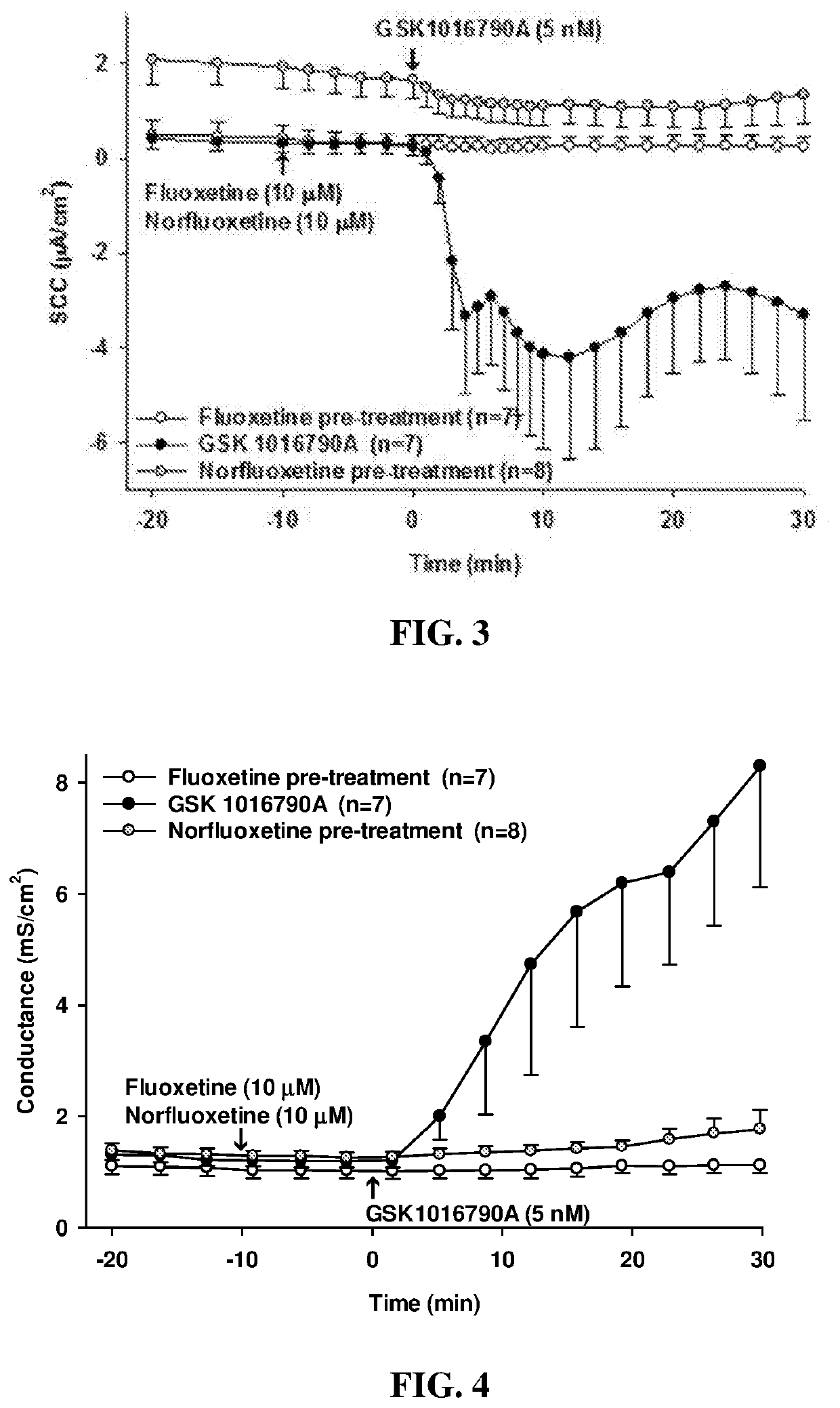Methods for Treating Hydrocephalus
a hydrocephalus and treatment method technology, applied in the field of hydrocephalus treatment, can solve the problems of increased neuronal death and long-term complications, and increase in pressure and tissue damage, and achieve the effect of broad and significant impact and inhibiting transepithelial ion transpor
- Summary
- Abstract
- Description
- Claims
- Application Information
AI Technical Summary
Benefits of technology
Problems solved by technology
Method used
Image
Examples
example 1
[0041]In this Example, the effect of pre-administration of fluoxetine on TRPV4-stimulated ion transport response was analyzed.
[0042]In order to follow transepithelial ion movement, Ussing chamber electrophysiological techniques were used. The choroid plexus model is a high resistance, continuous cell line of porcine choroid plexus epithelial cells grown on permeable supports. Cultures to be used for electrophysiological analyses were grown in 6-well, Transwell filters for 10-12 days at which time the cultures developed a high transepithelial electrical resistance mimicking the in vivo situation. The cells were mounted on electrophysiological apparatuses for analysis of transepithelial ion flux in response to inhibitory or stimulatory reagents. Filters were excised, mounted in a Ussing chamber, and connected to a DVC-1000 Voltage / Current Clamp with voltage and current electrodes on either side of the membrane. Each half of the chamber contained a tapered fluid compartment with fittin...
example 2
[0046]In this Example, the effect of pre-administration of fluoxetine or norfluoxetine on TRPVA-stimulated ion transport response was analyzed.
[0047]The same methods were used in this Example as in Example 1. As shown in FIG. 3, when the cells were pre-treated with fluoxetine or norfluoxetine from time −10 to 0 minutes (depicted as white symbols and grey symbols, respectively), the GSK1016790A-stimulated (at 0 minutes) transepithelial potassium secretion in the direction of the CSF was completely inhibited (FIG. 3). Further, pre-treatment with fluoxetine or norfluoxetine blocked this increased permeability (FIG. 4).
PUM
| Property | Measurement | Unit |
|---|---|---|
| constant temperature | aaaaa | aaaaa |
| osmolarity | aaaaa | aaaaa |
| fluid movement | aaaaa | aaaaa |
Abstract
Description
Claims
Application Information
 Login to View More
Login to View More - R&D
- Intellectual Property
- Life Sciences
- Materials
- Tech Scout
- Unparalleled Data Quality
- Higher Quality Content
- 60% Fewer Hallucinations
Browse by: Latest US Patents, China's latest patents, Technical Efficacy Thesaurus, Application Domain, Technology Topic, Popular Technical Reports.
© 2025 PatSnap. All rights reserved.Legal|Privacy policy|Modern Slavery Act Transparency Statement|Sitemap|About US| Contact US: help@patsnap.com


